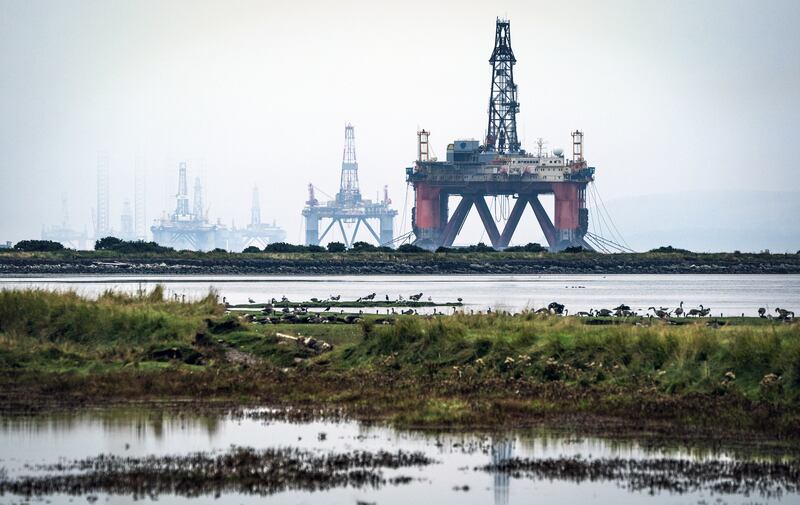Oil prices fell in early trade on Thursday following three straight days of gains after the US Federal Reserve stayed the course with another interest rate increase and a surprise rise in US crude stocks.
Brent, the benchmark for two-thirds of the world’s oil, was trading 0.47 per cent lower at $76.33 a barrel at 3.23pm UAE time.
West Texas Intermediate, the gauge that tracks US crude, was down 0.68 per cent at $70.42 a barrel.
Brent crude settled 1.82 per cent higher at $76.69 a barrel on Wednesday, while WTI was up 1.77 per cent at $70.90.
"[Crude futures] are a little lower today after gradually recovering in recent days. While no one can say with confidence that a banking crisis has been averted, there is growing confidence that the actions taken by central banks, regulators and governments have significantly reduced the odds of one," said Craig Erlam, senior market analyst at Oanda.
The Fed raised interest rates by a quarter of a percentage point on Wednesday and indicated that it may pause future rate increases following the recent turmoil in financial markets.
The central bank also said that the US banking system was “sound and resilient” despite the collapse of two large American banks, which spurred the broad sell-off in global financial markets last week.
“Recent developments are likely to result in tighter credit conditions for households and businesses and to weigh on economic activity, hiring and inflation,” it said.
Wednesday's monetary policy action from the Fed brings its interest rates to between 4.75 and 5 per cent, just 25 basis points shy of its initial end-of-year projections.
“The hike comes amid substantial stress in financial markets but means that the Fed is still prioritising its fight against inflation,” said Edward Bell, senior director of market economics, Emirates NBD.
The European Central Bank raised interest rates by 0.5 percentage points last week and said there was no need for its monetary policy plans to be adjusted.
US crude inventories — an indicator of fuel demand — increased by 1.1 million barrels last week to 481.2 million barrels, the highest since May 2021, according to the US Energy Information Administration data.
Analysts polled by Reuters were expecting a drop of 1.6 million barrels in the week that ended on March 17.
Petroleum inventories fell by 6.4 million barrels, while distillate fuel stocks decreased by 3.3 million barrels, the EIA said.
Brent posted its biggest declines in months last week following the collapse of Silicon Valley Bank and Signature and a crisis at Europe’s Credit Suisse, which resulted in the bank’s acquisition by larger rival UBS in an emergency rescue deal.
Analysts say the recent drop in prices does not reflect oil market fundamentals, backed by strong crude consumption in Asia and the continued economic recovery in China, the world’s large crude importer.
Oil demand growth will "accelerate" to 2.6 million barrels per day in the fourth quarter of this year, from 710,000 bpd in the current quarter, the International Energy Agency said in its February oil market report.
The Opec+, which will meet on April 3, has previously indicated that it could adjust its output in response to changing market conditions.
The alliance of 23-oil producing countries decided to slash its collective output by 2 million bpd in October last year in response to a slowdown in the global economy.






